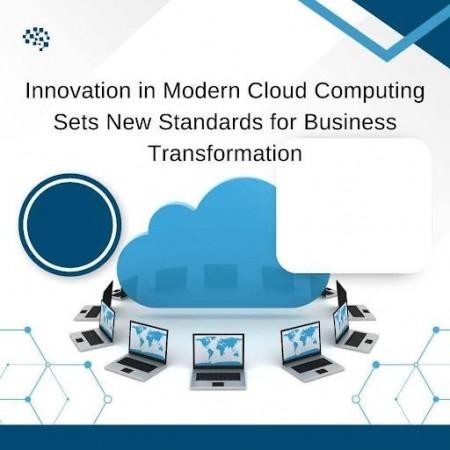
In a groundbreaking research article, Sardar Mohammed, a cloud infrastructure expert from the United States, provides comprehensive insights into the transformative evolution of cloud computing architecture and its impact on modern enterprises. His analysis reveals how emerging technologies are reshaping the digital landscape through innovative service models and implementation strategies.
The Foundation of Modern Cloud
The cloud infrastructure landscape has undergone a remarkable transformation, with organizations experiencing an average 32% reduction in IT operational costs and a 45% improvement in deployment speed. The integration of hardware resources, software solutions, and sophisticated networking components has created a robust framework that enables seamless delivery of cloud computing services, fundamentally changing how businesses operate in the digital age.
Revolutionary Service Models
Cloud infrastructure revolves around three pivotal service models, each addressing unique organizational needs. Infrastructure as a Service (IaaS) provides virtualized computing resources with exceptional flexibility, enabling businesses to scale dynamically. Containers as a Service (CaaS) revolutionizes application deployment through advanced containerization techniques. Platform as a Service (PaaS) delivers comprehensive development environments, empowering enterprises to accelerate innovation while significantly reducing development timelines and operational complexities.
Emerging Technologies Drive Innovation
The integration of quantum computing with traditional cloud systems represents a revolutionary advancement in digital technology. As the industry prepares for the post-quantum era, providers are pioneering quantum-safe encryption protocols to maintain robust data security. Simultaneously, artificial intelligence has become an integral part of cloud infrastructure, bringing unprecedented capabilities to resource management. Through advanced machine learning algorithms and predictive maintenance systems, AI is transforming how cloud resources are allocated, monitored, and optimized, setting new standards for operational efficiency.
Edge Computing Transformation
Edge computing is revolutionizing network intelligence by integrating AI at the network's periphery. Organizations now process massive IoT data streams in real-time, reducing latency and optimizing bandwidth. Powered by 5G, this technology enables breakthrough applications in autonomous vehicles and augmented reality while enhancing cybersecurity through decentralized computational architectures that distribute and protect network endpoints. This paradigm shift represents a fundamental transformation in how computational resources are deployed, bringing intelligence closer to data sources and dramatically improving real-time processing capabilities.
Autonomous Infrastructure Management
The rise of autonomous infrastructure management marks a pivotal shift in cloud computing evolution. Advanced AI algorithms now power self-managing systems that transform routine operations, from maintenance tasks to resource scaling, with minimal human oversight. These intelligent systems demonstrate remarkable capabilities in predictive maintenance, automatically identifying and resolving potential issues before they impact performance. The integration of self-healing mechanisms enables cloud infrastructures to maintain optimal health through automated problem detection and resolution.
Industry-Wide Impact
The implementation of cloud infrastructure varies significantly across different sectors, each presenting unique challenges and requirements. Healthcare organizations have revolutionized patient care through integrated electronic health records systems, while financial institutions have transformed transaction processing through blockchain integration. Manufacturing has evolved into smart factories through IoT integration, and retail has embraced omnichannel commerce through sophisticated cloud solutions.
Future Trajectory
According to industry forecasts, edge computing integration with traditional cloud infrastructure is expected to grow by 75% by 2025, while AI-driven infrastructure management solutions are projected to become standard in 80% of enterprise cloud deployments. This evolution continues to accelerate, driven by technological innovations and changing business demands.
In conclusion, the fusion of emerging technologies in cloud infrastructure is creating unprecedented opportunities for digital transformation. As demonstrated in Sardar Mohammed's comprehensive analysis, the symbiotic relationship between quantum computing, AI, and edge computing is not just enhancing system capabilities but revolutionizing how organizations approach their computing needs. This technological convergence promises a future where cloud infrastructure will be more automated, intelligent, and adaptable, fundamentally transforming the digital enterprise landscape.








![Sky is the limit: IndiGo is now tenth largest airline by capacity globally; growth indisputable [details]](https://data1.ibtimes.co.in/en/full/767455/sky-limit-indigo-now-tenth-largest-airline-by-capacity-globally-growth-indisputable-details.jpg?w=220&h=138)








